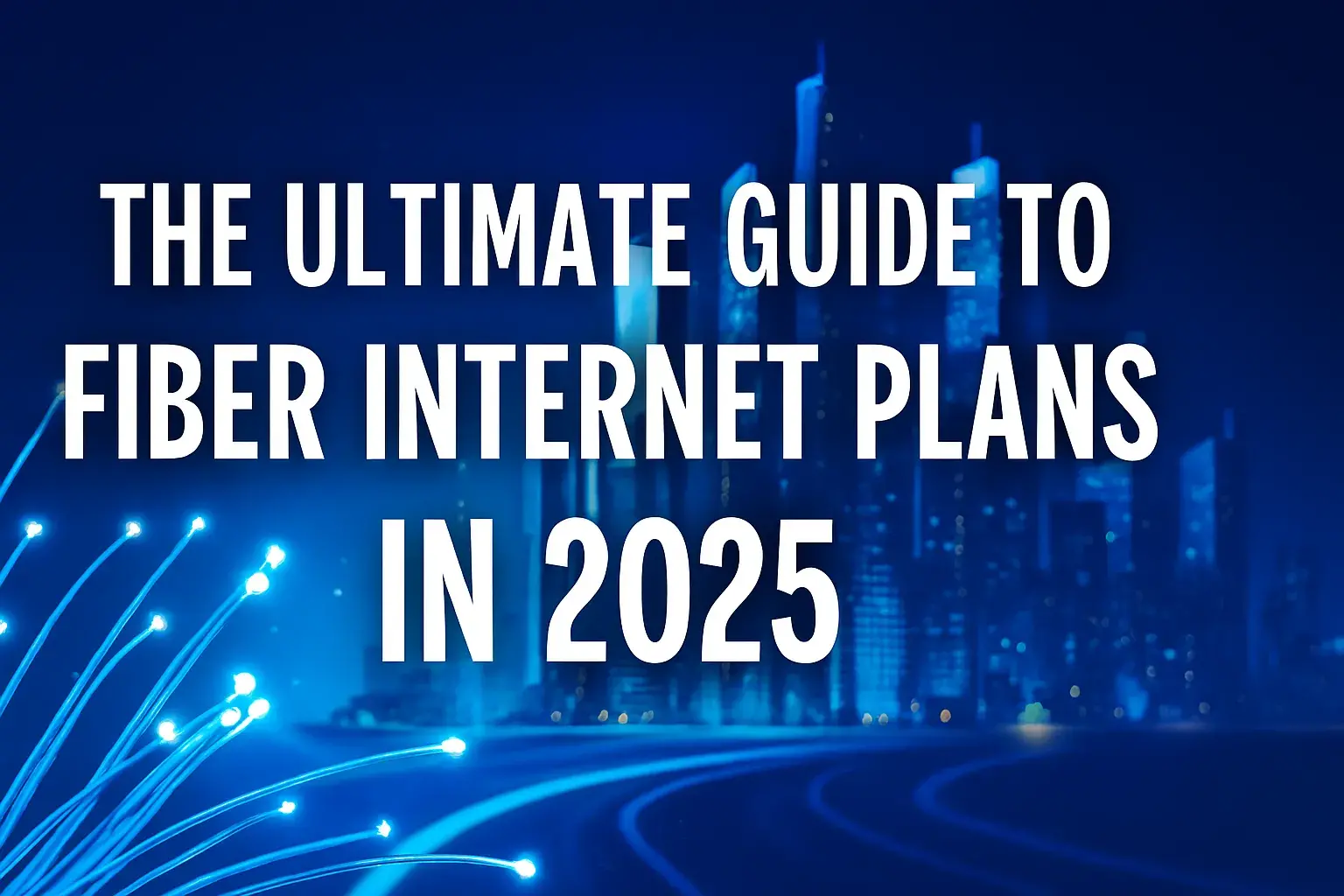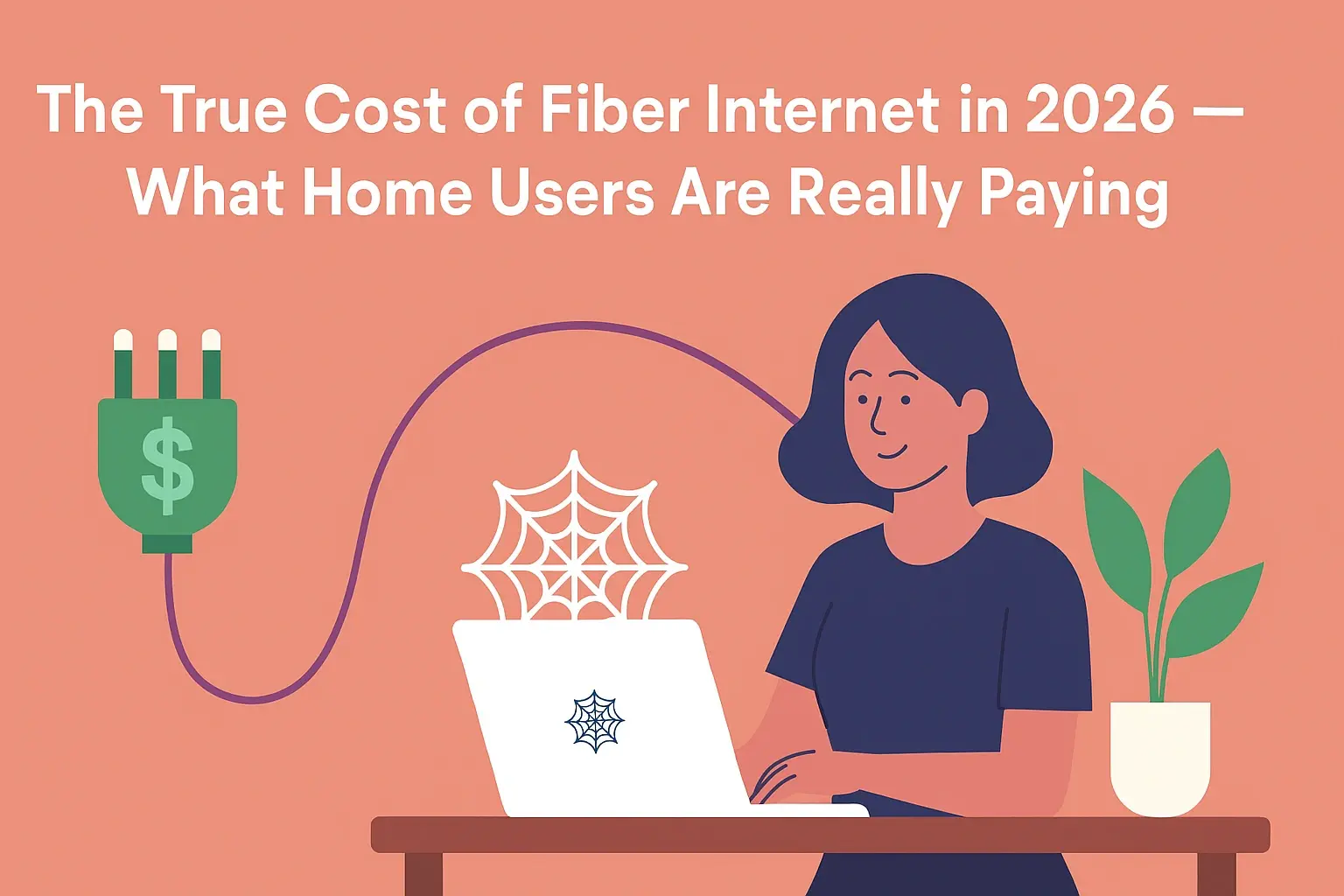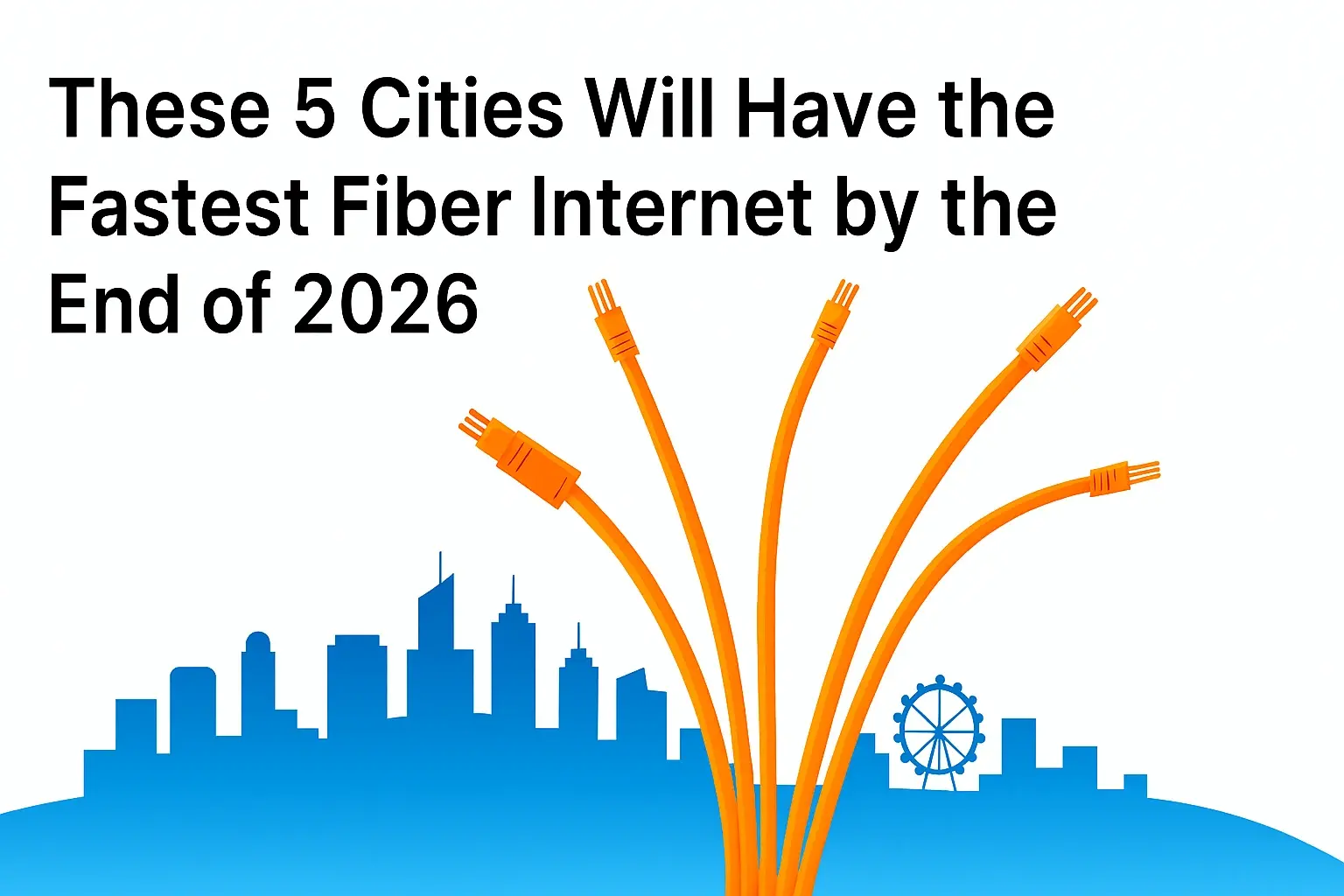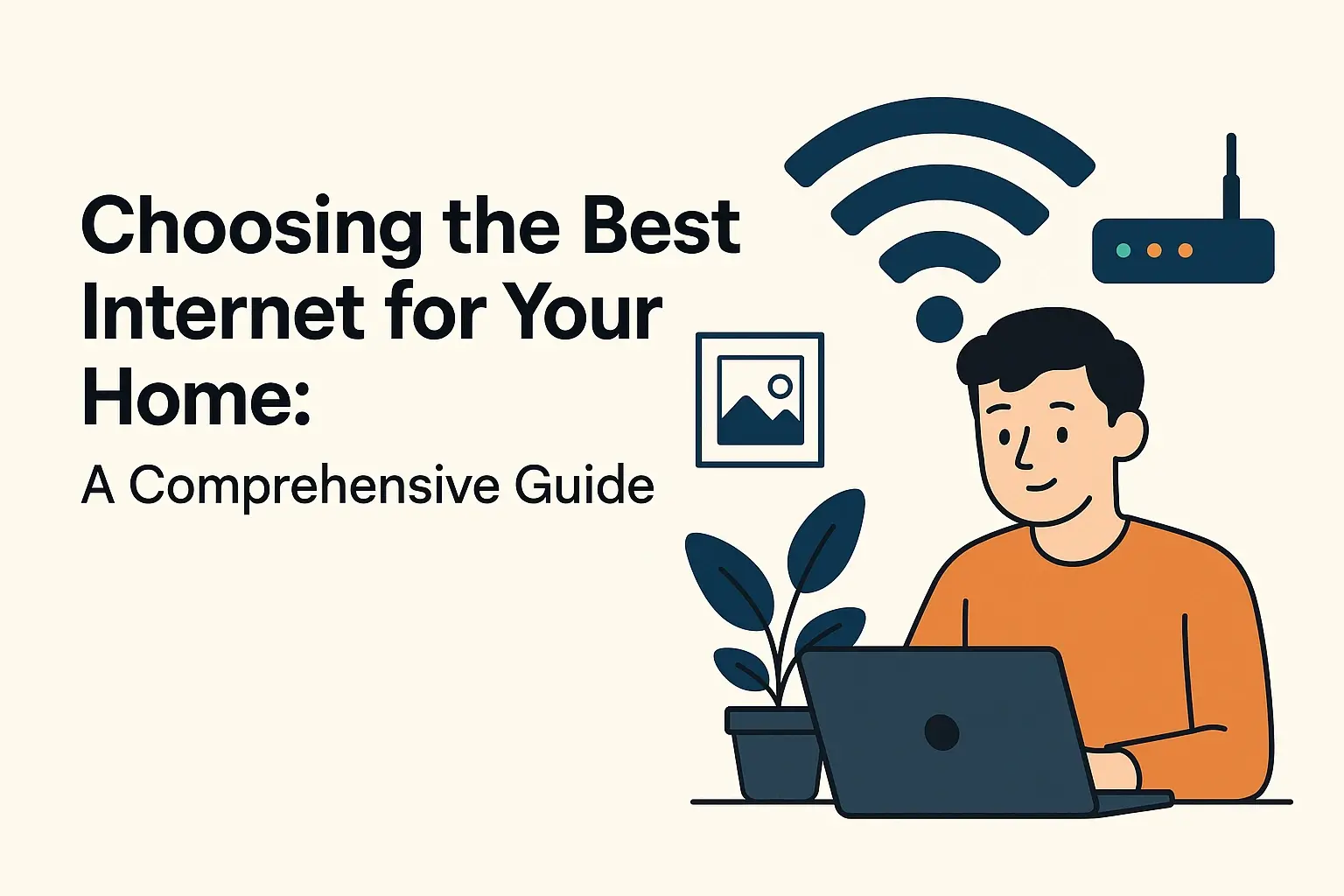The Ultimate Guide to Fiber Internet Plans in 2025

In an era where digital connectivity underpins nearly every aspect of daily life, fiber internet has emerged as the gold standard for high-speed, reliable online access. As of August 2025, with global internet penetration reaching 67.5% and over 5.56 billion users worldwide, the demand for faster, more stable connections is at an all-time high. Fiber-optic technology, which transmits data via light through glass or plastic strands, offers unparalleled performance compared to traditional options like cable internet or DSL internet. This blog post provides an in-depth exploration of fiber internet plans, drawing on the latest research, surveys, and provider data. We'll cover what fiber internet is, its benefits, top providers and their plans, comparisons, key statistics with visual representations, selection tips, and future trends. By the end, you'll have the insights needed to choose the best plan for your needs—whether for remote work, streaming 8K content, or gaming without lag.
What is Fiber Internet?
Fiber internet represents a revolutionary shift in broadband technology. Unlike copper-wire-based systems used in cable or DSL, fiber uses optical fibers to carry data as pulses of light. This enables data transmission at speeds approaching the speed of light, with minimal signal degradation over long distances.
The infrastructure involves fiber-optic cables laid underground or on poles, connecting to your home via an optical network terminal (ONT). Inside, a router distributes the signal wirelessly or via an Ethernet connection. Key technical advantages include:
- Bandwidth Capacity: Fiber can handle massive data loads, supporting multi-gigabit speeds.
- Low Latency: Ideal for real-time applications like video calls or online gaming.
- Scalability: Easily upgradable without replacing cables.
In 2025, fiber deployment has accelerated, with the U.S. seeing significant growth. According to industry reports, fiber now passes over 30 million locations, driven by investments from major providers. Globally, the fiber optics market was valued at $8.07 billion in 2023 and is projected to grow, reflecting increasing adoption in both urban and rural areas.
However, availability remains a challenge. While urban areas enjoy widespread coverage, rural regions lag, with only about 48% of global rural populations connected compared to 83% in urban areas. In the U.S., tools like the FCC's National Broadband Map help users check local availability.
Benefits of Fiber Internet Over Other Types
Fiber internet's superiority stems from its core technology, offering benefits that outpace cable, DSL, and even emerging 5G home internet in many scenarios.
- Speed and Performance: Fiber delivers symmetrical speeds—equal upload and download rates—up to 8 Gbps or more. For context, cable tops out at around 1-2 Gbps download but much slower uploads. Recent speed tests show AT&T Fiber achieving median downloads of 363 Mbps, outpacing competitors. This enables seamless 4K/8K streaming, large file transfers, and multi-device usage without buffering.
- Reliability and Low Latency: Fiber is less prone to interference from weather or electromagnetic sources, boasting 99.99% uptime in many cases. Latency is often under 10ms, crucial for gaming and virtual reality. Surveys indicate fiber users experience fewer outages than cable users.
- Customer Satisfaction: Fiber consistently ranks highest in satisfaction surveys. In the 2025 ACSI report, fiber ISPs scored 76 on average, compared to 68 for non-fiber. Customers praise fiber for value, with 72% believing it's worth the cost versus 55% for cable. J.D. Power's 2025 study shows fiber leading in reliability, though 5G is closing the gap due to affordability.
- Future-Proofing: As data demands grow—with AI, IoT, and smart homes—fiber's capacity ensures longevity. Cable may require frequent upgrades, while fiber supports emerging tech like 10G networks.
- Environmental and Economic Impact: Fiber uses less energy than copper systems and supports economic growth by enabling remote work and e-commerce.
Compared to cable, fiber offers better upload speeds and consistency, though cable is more widely available. Vs. 5G home internet, fiber is faster and more stable, but requires a wired installation. Surveys from HighSpeedInternet.com show fiber customers rating satisfaction 20% higher than DSL users.
Major Fiber Internet Providers in the US
In 2025, several providers dominate the fiber landscape, each with unique strengths in coverage, pricing, and features.
- AT&T Fiber: The largest fiber network, covering over 30 million locations. Plans start at $55/mo. For 300Mbps, up to $155/mo. for 5Gbps. No data caps, unlimited data, and high satisfaction scores (ACSI: 80). Best for multi-gig needs.
- Google Fiber (GFiber): Known for speed and value, offers 1Gbps for $70/mo, up to 8Gbps for $150/mo. Available in select cities, with top PCMag ratings (24.8/40 index). High customer approval (83% satisfied).
- Verizon Fios: Speeds from 300Mbps ($49.99/mo.) to 2.3Gbps. Strong in the Northeast, with low latency (12ms). ACSI score: 76. Bundles well with mobile.
- Frontier Fiber: Affordable starting at $29.99/mo. for 200Mbps, up to 7Gbps. Expanded coverage, strong value in the South.
- Quantum Fiber (Lumen): Fastest major ISP (speed index 621.5), starts at 500Mbps. Available to 2.2% of the US.
Other notables: Ziply Fiber ($20/mo for 100Mbps), Kinetic, and regional players like Sonic (10Gbps for $59.99/mo).
Comparison of Top Fiber Plans
To help you decide, here's a comparison table of popular plans (prices as of August 2025, subject to change):
| Provider | Starting Price | Base Speed | Max Speed | Data Cap | Satisfaction Score (ACSI 2025) |
|---|---|---|---|---|---|
| AT&T Fiber | $55/mo. | 300Mbps | 5Gbps | Unlimited | 80 |
| Google Fiber | $70/mo. | 1Gbps | 8Gbps | Unlimited | 76 |
| Verizon Fios | $49.99/mo. | 300Mbps | 2.3Gbps | Unlimited | 76 |
| Frontier | $29.99/mo. | 200Mbps | 7Gbps | Unlimited | 72 |
| Quantum Fiber | Varies | 500Mbps | Multi-Gig | Unlimited | 74 |
Google Fiber excels in value for gigabit speeds, while AT&T leads in coverage and satisfaction. Frontier offers the cheapest entry point.
Research Data and Statistics
Fiber adoption is surging. In the U.S., fiber broadband subscriptions grew by 3.8 million in 2024, with an average adoption rate of 45.2%. Globally, the optical fiber connectivity market is projected to grow at 9a .3% CAGR to 2034.
Survey Data: The 2025 Allconnect survey shows fiber with the highest satisfaction (above 5G and cable), particularly in speed and service. HighSpeedInternet.com's review names Google Fiber #1 overall.
Market Share and Growth: Fiber holds 34% of the broadband market. The U.S. coverage map shows dense urban deployment.
Speed tests from Ookla: AT&T Fiber at 360.85 Speed Score, consistency 95.2%.
How to Choose the Right Plan
Assess your needs: Households with 4+ devices need at least 500Mbps. Check availability via zip code tools. Consider bundles for savings, read reviews, and factor in installation fees. Prioritize providers with no contracts and unlimited data.
1. Identify Your Needs
Assess what you want to achieve. Are you looking for basic features, premium support, or advanced functionality?
Consider your budget, user count, and any special requirements.
2. Compare Features
List the key features of each available plan.
Match plan features to your requirements—prioritize essentials over nice-to-have options.
3. Consider Flexibility
Look for upgrade/downgrade options, contract duration, cancellation policies, and add-ons.
Make sure you can switch plans if your needs change.
4. Evaluate Costs
Calculate the total cost, including taxes, usage charges, and potential extra fees.
Check for hidden costs like implementation, training, or future price increases.
5. Check Reviews & Reputation
Research customer feedback about the plans and providers.
Look for reliability, customer service, and complaints.
6. Review Support Options
Assess the support channels and response times included with each plan.
Factor in access to priority or 24/7 assistance if your business depends on uptime.
7. Test with Trials or Demos
Make use of trial periods or demo versions to experience the plan firsthand.
Confirm that the functionality and support meet your expectations.
8. Plan for Growth
Choose a plan that can grow with you, whether adding users, expanding features, or scaling usage.
9. Consult Stakeholders
Get input from team members who will use the service.
Ensure the plan fits with organizational policies and workflows.
10. Make an Informed Decision
Combine all inputs and analytics.
Select the plan that balances your needs, budget, and future growth.
Future Trends in Fiber Internet
By 2030, fiber could dominate with multi-gig expansions and AI integration for smarter networks. Trends include open-access models, 10G speeds, and rural growth via BEAD funding. Global market to reach $18.5 billion by 2035.
Conclusion
Fiber internet plans in 2025 offer unmatched value for speed-hungry users. With providers like AT&T and Google Fiber leading, now's the time to upgrade. Research your area and choose wisely for a seamless digital experience.
Faq
Why choose fiber in 2025?
Fast, reliable, symmetrical speeds (1–10Gbps+), low latency, great for streaming, gaming, work.
Is fiber more expensive?
Slightly higher starting cost, but better value per Mbps and lower long-term maintenance.
What’s new in 2025?
AI-optimized networks, advanced fiber types, smart city & 5G integration, bundled services.
How long is installation?
Usually 2–4 hours if fiber is available; longer in new or rural areas.
Can I upgrade from cable/DSL?
Yes, with minimal downtime; check provider’s service availability first.





